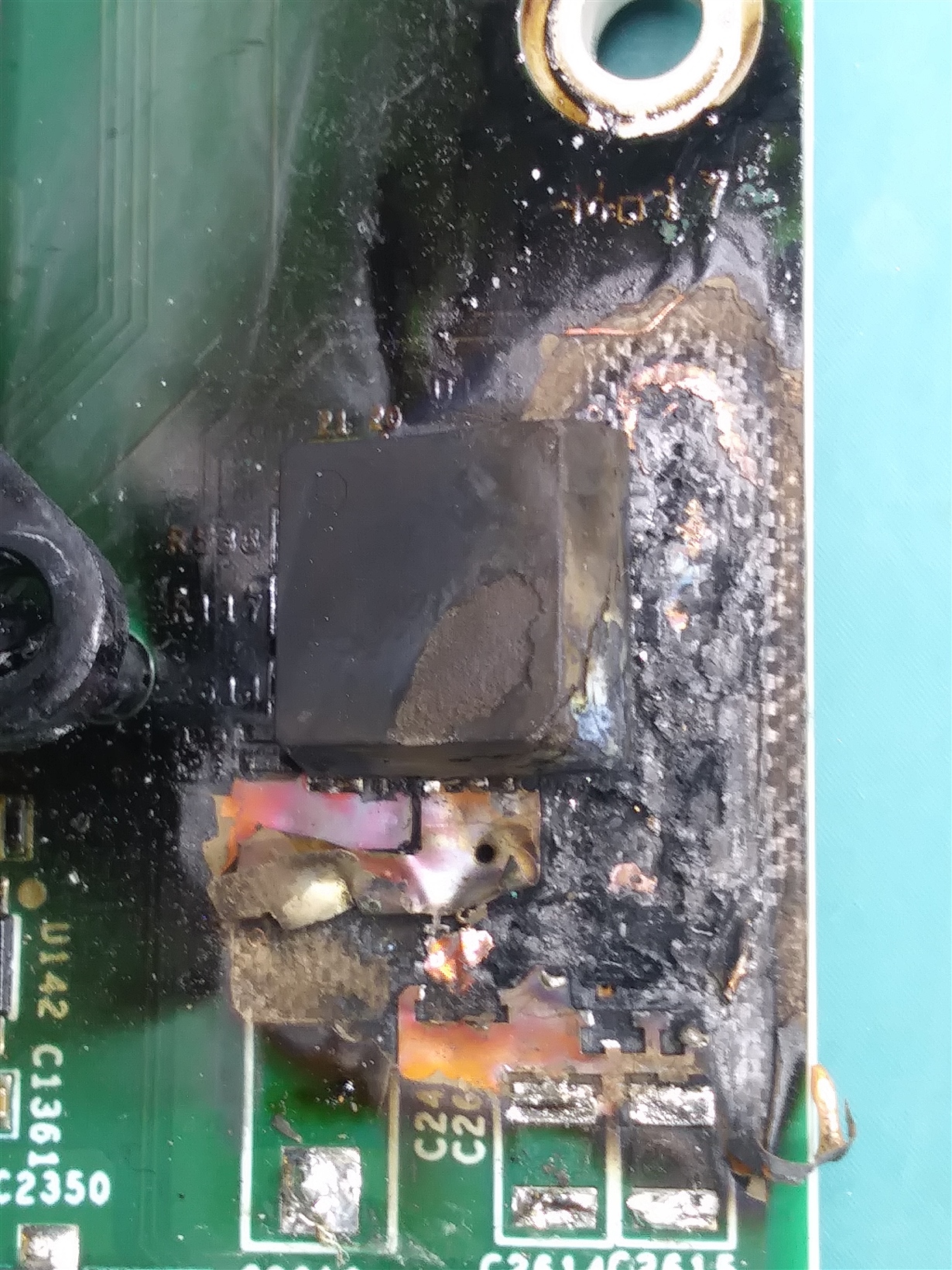Other Parts Discussed in Thread: LMZ31704
Hi,
We have recently encounters 3 cases of catastrophic failure with the LMZ31707 in our design. The LMZ31707 was design to power the 3.3V rail for 4 QSFP pluggable modules in the system. The total max load current for all modules was designed for 6A, as such, there is a 1A buffer in the design.
Case (1) - The unit under test was loaded with four QSFP modules, the total load current is about 4.8A, running in the envirnoment chamber at 55 degree C with 90% humidity for 24 hours before the LMZ31707 fails. The VOUT was found to be shorted to PGND.
Case (2) - Same test environment as case (1) except that only 2 QSFP modules were installed, the total load current is about 2.4A. The uut was left to run overnight, it was found burnt the next day. The LMZ31707 and the input/ouput capacitors were badly charred.
Case (3) - This was a customer returned unit, operating probably in a room temperature environment. The LMZ31707 and the input/ouput capacitors were badly charred.
We did 2 experiments to try and re-produce the failure without any conclusion.
Ex (1) - at room temp, without any QSFP load, shorted the VOUT to GROUND and power on the system. The case temp on the part rise to around 58C and then it start to drop and stablized at around 52C. I am assuming that the Thermal Shutdown function kicks in. The part function normally after again the short was removed.
Ex (2) - in the environment chamber at 55 degree C and 90% humidity. Connects VOUT to a electronic load, drawing 7A, the case temperature measured around 73C. After 2 hours, the LMZ did not shut down and UUT is still working. The uut is left to run overnight until tomorrow.
It looks like this might be related to thermal rather than the Over Current issue.
Can you take a look and see what might be the root cause of this failure?
I have attached both the schematic and the PCB layout.


